Source: http://roape.net/2020/03/12/the-legacy-of-the-past-on-ethiopias-modern-political-life/
By John Markakis
Ethiopian historiography has long featured a claim to exceptionalism based on the country’s many distinctive features: a state whose roots go back to antiquity, a literate culture, the only place in Africa where Christianity survived as a native faith and a surplus producing agricultural economy that sustained a sophisticated class stratified society. Not least is the unique confrontation with European imperialism in the nineteenth century, following which the legendary Christian state on the northern plateau, also known abroad as Abyssinia, went on to build its own empire in the Horn of Africa, doubling its size and population in the process.
The self-proclaimed Ethiopian Empire was founded the same time Western imperialism occupied Africa, and with the same goal: access to and exploitation of material resources. In Ethiopia’s case the coveted resource was fertile land needed to relieve population pressure on the exhausted soils of the northern plateau. Accordingly, most of the productive land in the conquered territories was expropriated and given to land hungry northerners who flocked there. Land without labour to work it is useless, and this was forcibly extracted from the natives, turning them into serfs trapped in a quasi-feudal system of landholding. This proved a fateful development. While Abyssinian society was largely culturally homogeneous, the Ethiopian empire was highly heterogeneous, and the massive expropriation of land forged a nexus of class and ethnic contradictions, whose explosive repercussions have marred the country’s political life ever since.
Ethiopian historiography glosses over what is plausibly its most distinctive feature, the fact that the Ethiopian Empire did not dissolve in the past century when all its contemporaries in Africa did, to allow the subjugated population of the annexed regions to determine their own political future. Instead, much earlier, Ethiopia’s Abyssinian rulers had launched a nation-building project intended to create a homogeneous society out of its multi-cultural population. The chosen template for the envisaged nation was none other than the Abyssinian culture, and the goal was the assimilation of the non-Abyssinian population.
This policy greatly reinforced the destabilizing potential of the class/ethnicity nexus, that was immediately manifested in militant resistance on the part of those threatened with cultural deracination. To overcome it required a highly centralized authoritarian system of rule based on force provided by a bloated military and security apparatus, the largest at the time in sub-Saharan Africa. Employed primarily to suppress internal political opposition, the soldiers inevitably became highly politicized and inclined to intervene in public affairs.
The legacy of the past weighs heavily on Ethiopia’s modern political life, and is periodically manifested in crises that topple regimes and threaten the state’s survival. All of them sprung from the same unresolved issues, all led to frantic attempts to find solutions to age-old problems, and all failed miserably. The latest episode has been unfolding with agonizing slowness since 2018 and its resolution is nowhere yet in sight. I have personally witnessed three such episodes in my professional association with Ethiopia spanning five decades. As a historian, I’ve sought to fathom the issues that caused such crises and the reasons for the repeated failure to resolve them. Below I highlight four root causes that need to be confronted if meaningful reform is to be achieved: the ownership and control of land, ethnic conflict, the structure of the state, and the design of its political system.
Ownership and control of land
Land is Ethiopia’s most valuable resource, as well as the fundamental, perennial cause of conflict throughout its modern history. Control of land is of vital concern to those who live off agriculture; at present about three quarter of the population. Control of land is also of vital concern to the state, partly as a source of revenue, but mainly as the means of exercising control over the rural masses. Every Ethiopian regime in the past used a different approach to maintain such control; from the quasi-feudal arrangement of the imperial regime that collapsed in 1975, and the nationalization-cum-collectivization of the military junta known as the Dergue (1975-1991), to the ‘developmental state’ of the Ethiopian Peoples’ Revolutionary Democratic Front (EPRDF), the rebel movement that seized power in 1991 and commenced to implode in 2018.
Every regime in the past also had a different policy for economic development based on agriculture. Before its collapse, the imperial regime was moving towards a free market system; the Dergue nationalized all land, abolished landholding and promoted collectivization; while keeping land under state control, the EPRDF initially tried to modernize small scale production then, having failed, switched to large scale commercial agriculture based on imported capital and technology. These schemes, along with the funds to implement them, came as packages from abroad with scarcely any indigenous input. The ‘once size fits all’ package model ignored Ethiopia’s highly varied physical environment. Crucially, they were imposed without prior consultation with the peasantry, whose life was repeatedly turned upside down with quixotic schemes such as collectivization, villagisation, population resettlement, agriculturally-led-industrialization, and land leasing for plantation farming.
Unsurprisingly, all failed miserably. Failure was variously attributed to financial, environmental, or technical problems, as well as the alleged ignorance and resistance to change of the Ethiopian peasant. Indeed, peasant passive resistance, a weapon honed over centuries of oppression and exploitation, was widely manifested in non-cooperation, delay, subversion, and sabotage that helped undermine and thwart these schemes.
Given the technology of the time and the administrative limitations of the imperial state, the scorched lowlands surrounding the plateau were considered uncultivable and were spared the expropriation visited on the southern plateau. That omission is being corrected now with a vengeance. Imported technology and capital are turning the neglected lowlands into a promised land for the country’s development. Vast tracts of land are declared vacant and offered for exploitation to foreign and domestic capital. Huge state investment in hydroelectric projects provides irrigation. The hapless people who live there are displaced without compensation, and crammed into ‘villages’ without any means of earning a livelihood. The ultimate cruelty is the promise of work in the plantations, when the much claimed advantage of large commercial agriculture is its dependence on capital intensive technology.
Is the long-suffering Ethiopian peasantry ever to have a share in the decision making that controls their livelihood? Will the current political ferment produce a solution? Not likely. The faction that has risen to power from the wreckage of the EPRD gained early popularity with a commitment to far reaching reform in all spheres of public life. Its charismatic leader, Abiy Ahmed, a former army officer, became the focus of great expectations stimulated by bold initiatives at home, and was celebrated abroad with the Nobel Peace Prize for making peace with Eritrea. With a family lineage that crosses ethnic and religious lines, he is a member of the Evangelical community and has surrounded himself with advisers of the same background. Unsurprisingly, the regime has abandoned the ‘state led development’ model of the EPRDF – which claimed record rates of growth and equally spectacular growth in corruption and social inequality – putting its faith in capitalism and the free market. Without the benefit of public consultation, let alone assent, it has started auctioning state assets; even the highly profitable Ethiopian Airlines is on the block. Land privatization appears inevitable. Is the goal, one wonders, to throw the peasantry to the mercy of the free market, and turn food producers into food consumers and urban proletarians; a source of dirt cheap labour?
Ethnic conflict
Land is purely a class issue: control over the means of production. Confronted as such, it could transform the political equation by uniting the rural masses to protect their common interests. This has not happened in Ethiopia, because the land issue is invariably perceived though the ethnic filter an issue that divides and neutralizes the peasants. Nationality in itself is not a problem. As the Nigerian scholar, Claude Ake, put it, asking an African why he belongs to an ethnic group is like asking him why he has five fingers. What is more natural? Ethnicity is the template upon which African society is organized – its economy, society, polity and culture – and has been for ages. It provides a framework for identity and solidarity, as well as economic, social and political organization. Neither colonialism nor independence has provided an alternative. Instead, as Basil Davidson (1992) presciently wrote, the attempt to supplant ethnicity with the nation-state state proved ‘a curse and a burden for the black man.’
The ‘nation state’ became the idol of the westernized, African urban elite, a minuscule minority that inherited state power with independence. The quest of ‘nation-state building’, an imported Western concept and the Holy Grail of modernization, was launched with an unrelenting campaign to cleanse black Africa from the blight of ‘tribalism’. There were mundane reasons, other than modernity, for turning ‘tribalism’ into a social evil and a political crime. It was to undermine surviving traditional authority structures and neutralize political opposition from customary leaders. Africa’s kings, sultans, paramount chiefs, lawmakers, religious leaders, diviners and medicine men were the targets of a campaign that proved initially successful. Thus, ethnicity became a problem. Nevertheless, this hardly affected the currency of ‘tribalism’ since it became the political capital of the ruling elite themselves and remains the most potent force in political life throughout the subcontinent.
The state
The politicization of ethnicity in Ethiopia was planted by the imperial regime and was greatly reinforced subsequently by the persisting attempt to impose a national identity on the many ethnic communities – over eighty in number – that live within the country’s borders. The attempt failed, but not before it contributed to the collapse of the imperial and military regimes. By the end of this tumultuous period, every self-respecting ethnic group in Ethiopia had its own ‘national liberation front’, and the state was on the verge of collapse. State structural reform was imperative.
Itself a coalition of ‘national liberation fronts’, the EPRDF moved boldly to resolve the problem by accepting diversity, rehabilitating ethnicity, abandoning the quest for a homogeneous national identity, and restructuring the state in order to unravel the class/ethnicity knot. It chose federalism as the model. This was nothing new. Federalism has a long history in the Horn, where it has been the staple political demand of subordinate groups in every state of the region. It appeared first in the 1950s in the form of the ill-fated Eritrea-Ethiopia link, and subsequently in Kenya, Sudan and Somalia.
Has federalism served the purpose? In fact, it failed everywhere, and was followed by the longest wars in Africa (fought in the Horn, and the breakaway of Eritrea from Ethiopia, South Sudan from Sudan and Somaliland from Somalia. Federalism failed because it was used as a political ploy; nowhere did it provide a share of state power to those who demanded it. The EPRDF delegated administrative responsibility to the regional states, without even the illusion of decision making power. The center’s exclusive control of power remained intact; a lopsided relationship that made a mockery of the very essence of federalism. EPRDF’s brand of federalism was a perfect example of what J.C. Scott (1998) called ‘seeing like a state’; the pursuit of modernity through uniformity, standardization, regimentation, monitoring and policing of the population. Since presumably federalism is designed to accommodate diversity, the ‘one size fits all’ model of how the state ‘sees things’, turns the concept into an oxymoron. EPRDF’s manipulation of federalism satisfied no one.
Worse yet, it fuelled ethnic clashes in various parts of the country, which are now a graver threat to the state’s survival than ever before, raising the issue of state structure reform to the top of the political agenda, now the subject of an ongoing passionate debate in Ethiopia; with diametrically opposed views firmly held. The focus is on the balance of power between the centre and the regions, with the spokesmen of the subordinate ethnic groups demanding a drastic reversal in favour of the regions, while the spokesmen of the formerly dominant, largely Abyssinian, regions demand the opposite, allegedly in order to secure the survival of the state.
The need for federalism to reflect diversity, the very reason for its existence, is not on the agenda. Yet it is imperative to ask why Ethiopia’s immensely rich and colourful patrimony should be sacrificed on the altar of modernism. Why should every part of the federation have an identical profile to cleanse it of ‘tribalism’? Why should customary rules, familiar and preferable to the people, not be used along with national law? Why can traditional authority systems – Gaada in Oromia, the Sultanate of Aussa in Afar, the Anyawa kings in Gambela, the Somali clan chiefs, and many other institutions – that command popular respect not be integrated meaningfully in local government.
The political system
Because it incorporates all the rest, and will determine how they will be addressed, the design of the political system is the mother of all issues. Political system reform is part of regime change, however, the present crisis has not produced definitive change yet. This offers a rare opportunity to reflect and debate and hopefully agree on how to shake off the legacy of the past and move forward to cross the uncharted ‘political frontier’ (Markakis, 2011).
Every crisis in the past produced a leader – Menelik, Haile Selassie, Mengistu, Meles – a messiah upon who hopes for liberating reform were focused. Each of them in turn forged a rigidly authoritarian personalized regime based on force, betraying all hopes. The current crisis has produced an aspiring messiah also in the person of Abiy Ahmed. Does that imply Ethiopia is ungovernable otherwise? Of course not, people say. Elections have been scheduled for August 2020 to introduce democracy.
Even though they have a woeful history in Africa, elections still inspire a pathetic faith. They were introduced in Ethiopia in the 1950s by the imperial regime, and have been staged more or less regularly under its successors with various brand names – imperial democracy, peoples’ democracy, popular democracy. The popular brand currently is liberal democracy which has its own history in Africa, where it functions as a façade for all types of misrule: keeping political scientists in business classifying types of ‘hybrid democracy’.
Liberal democracy is the opium of the westernized elite, the urban minority that rules Africa. ‘The debate on democracy among African scholars is threatening to become an unabashed celebration of liberalism’ noted the Tanzanian scholar, Issa Shivji (1991) ‘This is where the first pitfall of the debate on democracy lies. So long as it remains imprisoned within the four walls of liberalism, I dare say, The Debate has not begun – it may be a Diversion but not a Debate.’ Reduced to its institutional minimum of periodic elections, liberal democracy is not a representative system. It is a reliable tool of minority rule that excludes the rural masses, entertaining them periodically with theatrical performances called elections. Elections in Africa are not taken seriously by anyone, even democracy’s fervent promoters from the West. Witness the praise heaped on the ‘democratically elected government’ of Ethiopia by Barak Obama following the 2015 elections, which the regime ‘won’ by 100 percent of the vote.
Is this farce to be repeated in 2020 as planned? Predicted to involve over 100 political factions, nearly all of them ethnically based, can it rationally be expected to accomplish anything other than to inflate tribalism, the political capital traded by the ethnic entrepreneurs now queuing up to register for the elections. Cannot the long suffering Ethiopians not look inward to devise systems and institutions that have roots in their country’s soil, to serve its entire people, in the cities and the villages, the highlands and the lowlands, recognizing and respecting their cultural differences?
This task cannot be left to the ruling elite. Their training has deprived this class of the ability to think independently, outside the box imposed by the modernity dogma, and to relate empathetically with the rural masses, the overwhelming majority of the population they seek to ‘modernize.’ What has been called the ‘decolonization of the mind’ is imperative for the production of solutions based on Ethiopia’s reality – history, culture, custom, traditional systems of authority, rulemaking and conflict resolution. This is not to reject universal values that are the inheritance of all humankind. It is to ‘naturalize’ them by adapting and integrating them into the native patrimony. An ‘African solution’ the Ugandan scholar Mahmoud Mamdani explains is a ‘contextual’ solution: ‘Context is not opposite to universal value or standards. Context is an understanding that any concrete situation is an outcome of multiple processes; historical, political, economic, social, moral and so on’.
John Markakis is Emeritus Professor of History at the University of Crete, he has published numerous books and articles on Ethiopia, the Horn of Africa and the whole continent. John is a member of ROAPE’s International Advisory Board.
This blogpost is based on John Markakis’ keynote address delivered to the Oromo Studies Association Conference, 30 July 2019, Addis Ababa.
Featured Photograph: View of Addis Ababa, Ethiopia‘s capital (12 January, 2015)
References
Davidson, Basil (1992) The Black Man’s Burden: Africa and the Curse of the Nation-State New York: Times Books
Shivji, Issa (1991) ‘The Democracy Debate in Africa’ Review of African Political Economy Vol. 18/ Issue 50
Markakis, John (2011) Ethiopia: The Last Two Frontiers James Currey
Scott, J.C. (1990). Seeing Like a State Yale University Press

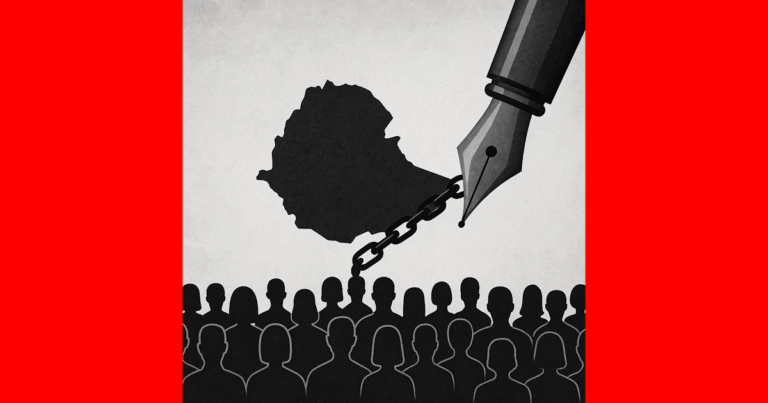
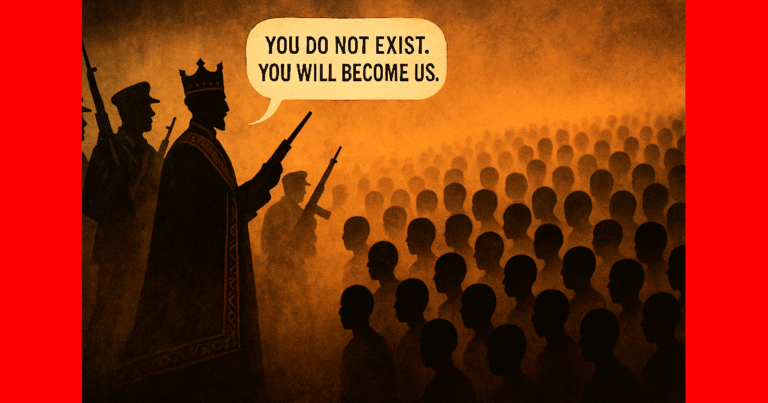
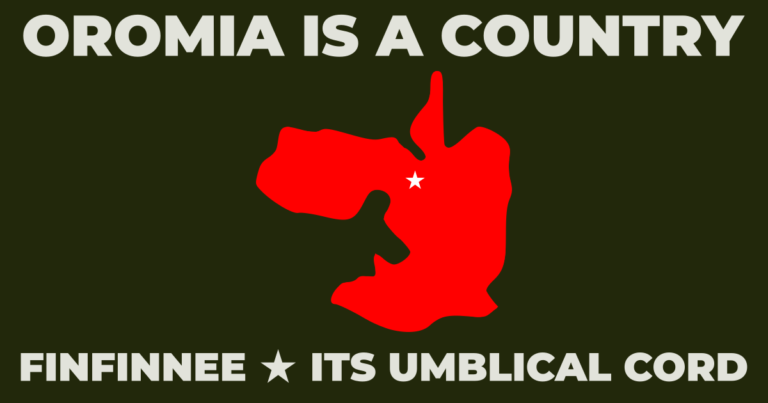
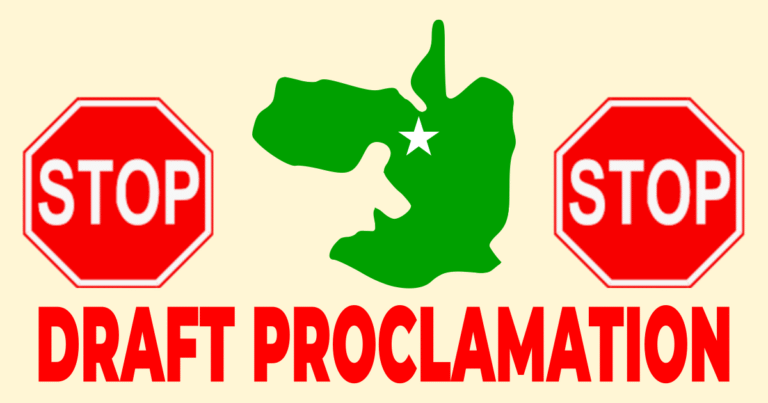

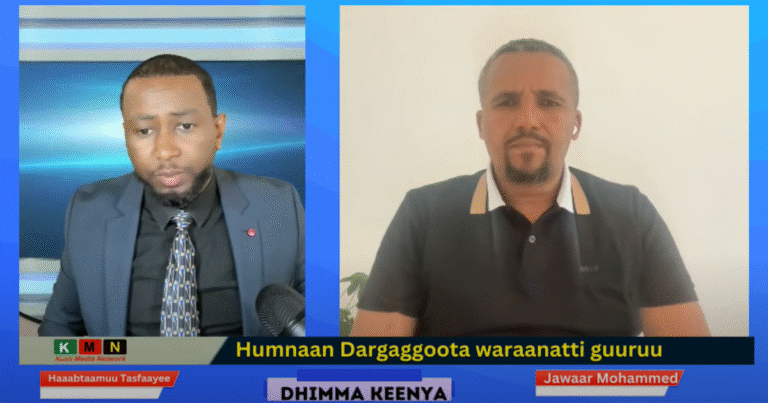
360989 653687It can be difficult to write about this topic. I believe you did a fantastic job though! Thanks for this! 277416